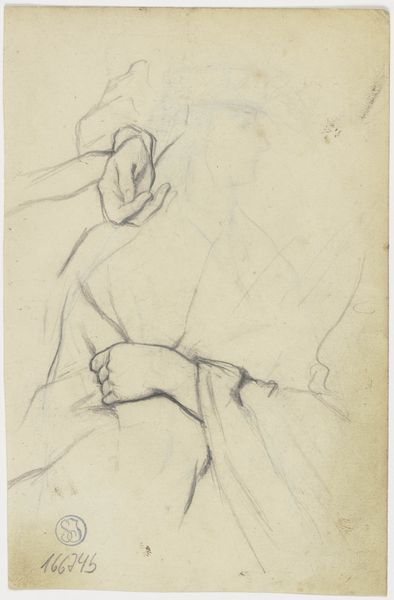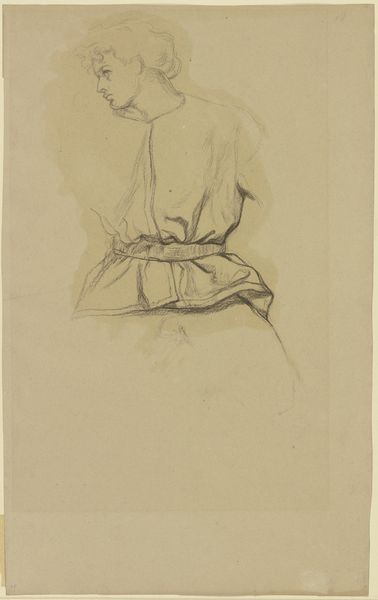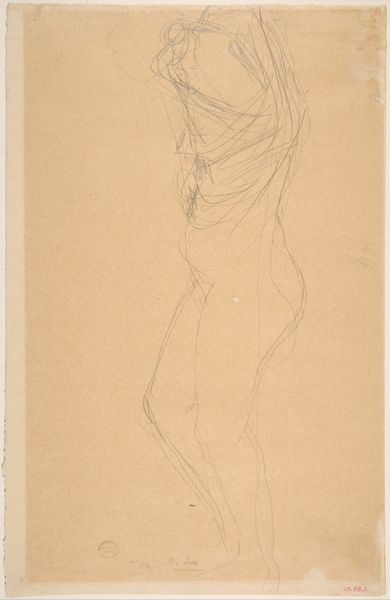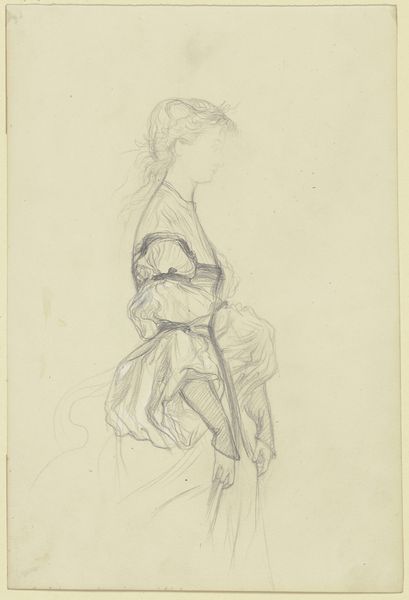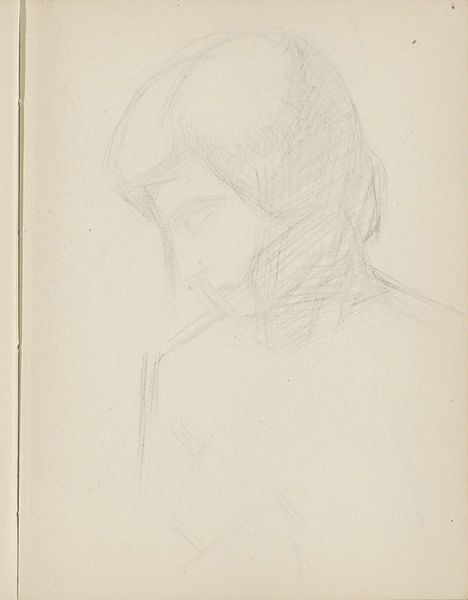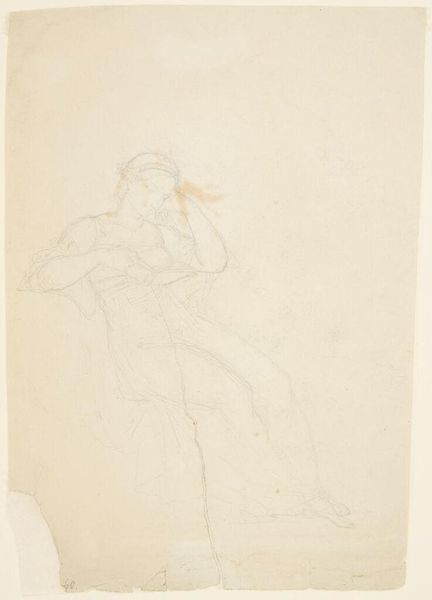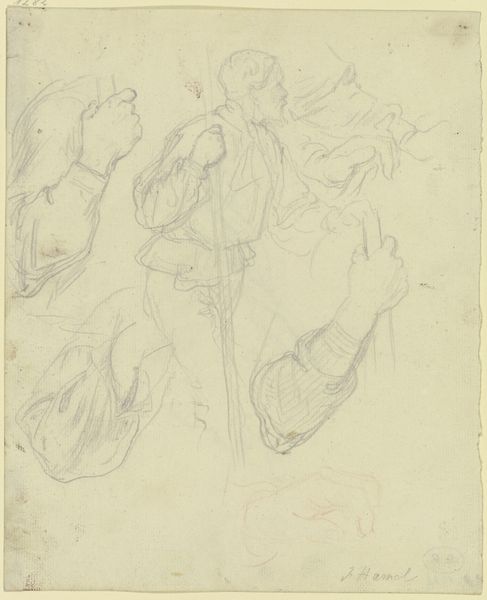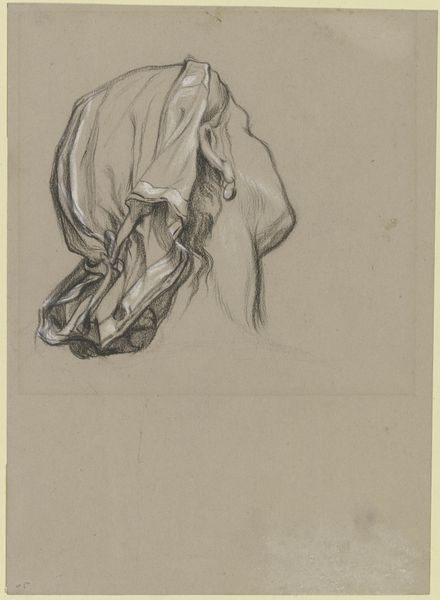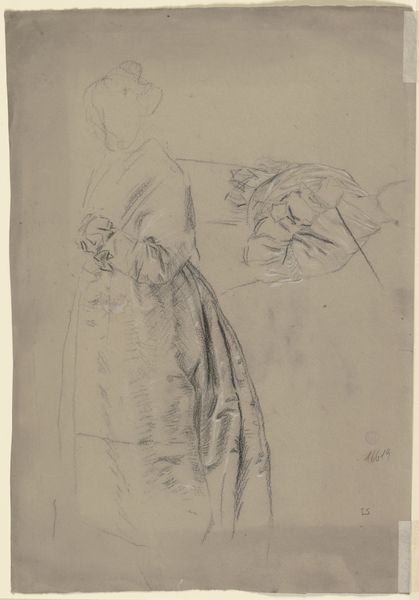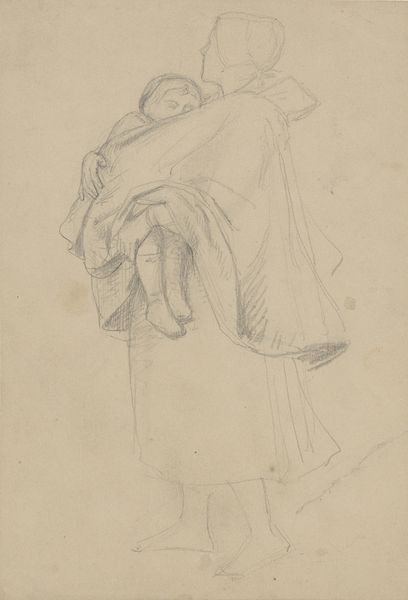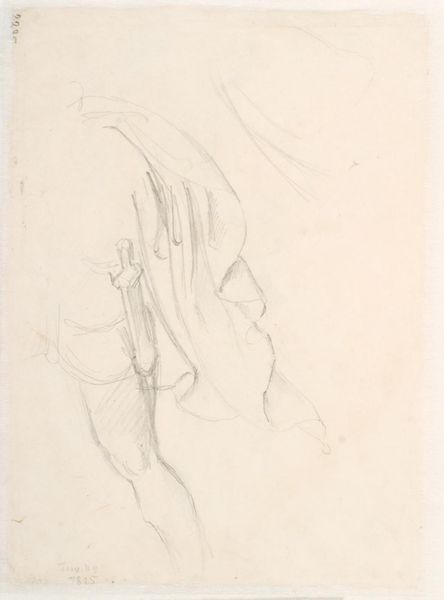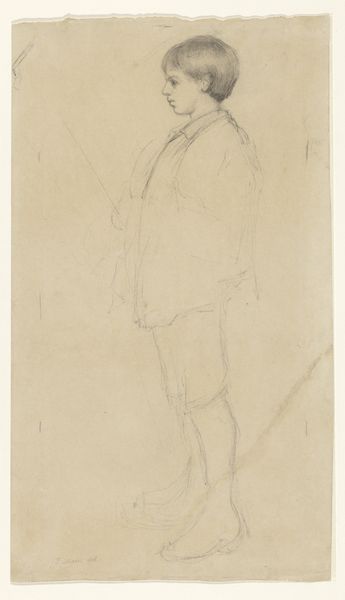
Kopf der alten Frau aus _Ritter Hartmut von Kronberg nimmt von seinen Angehörigen Abschied_ c. 1866 - 1867
0:00
0:00
drawing, paper, pencil, chalk
#
portrait
#
drawing
#
paper
#
pencil
#
chalk
#
academic-art
Copyright: Public Domain
Curator: This chalk and pencil drawing on paper, residing here at the Städel Museum, is titled "Kopf der alten Frau aus _Ritter Hartmut von Kronberg nimmt von seinen Angehörigen Abschied_" created around 1866 to 1867 by Victor Müller. What strikes you first about this rendering of an old woman's head? Editor: The upward tilt of her head, that simple head covering, gives me a strong sense of quiet dignity, perhaps even resignation. It feels like a captured moment of reflection, almost reverie. Curator: It is indeed striking how Müller conveys such emotion with so few lines. Looking at the broader context, this is a study for a larger history painting depicting Hartmut von Kronberg taking leave of his family. Knowing this, the woman’s upward gaze shifts to one imbued with anticipation, perhaps of some kind of fateful goodbye. What symbols do you detect here? Editor: That is compelling. The head covering itself evokes several interpretations. It could signal piety, humility, even mourning given the narrative context you described. In various cultures, head coverings also symbolize protection. Is she cloaked for the impending departure? Curator: Yes, she is a complex character embodying varied intersections. Note the angle of the drawing. Is she representative of a subjugated people under patriarchal rule? The rendering, of course, evokes class considerations. Her very identity is linked to historical events. This can make any interpretation far removed from artifice. Editor: Her very presence—her inclusion in this departure scene—speaks to the roles women played as witnesses and emotional anchors during such times. I find myself returning to her expression. Müller’s skillful rendering reveals a wealth of human emotion beneath the surface. Curator: Exactly. She embodies a quiet strength but her strength and resilience is inextricably tied to loss and displacement that many women had historically endured and continue to endure, even today. That quiet strength may be the key symbolic reference. Editor: It reminds us that even fragmentary studies, like this one, can hold within them powerful narratives and enduring symbols of resilience, a window into history itself. Curator: It underlines that art, especially portraiture, does not happen in a vacuum. We have a responsibility to unpack that complexity.
Comments
No comments
Be the first to comment and join the conversation on the ultimate creative platform.
